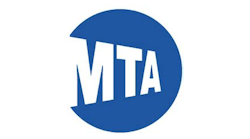MTA Chairman Joseph Lhota said, “New Yorkers are rightfully frustrated with the current state of the subways, and their demands for better service have been heard. We are committed to earning back their trust by implementing solutions that will enhance the customer experience in the short- and long-term. The NYC Subway Action Plan marks the beginning of a new chapter for the MTA and provides an opportunity to stabilize and improve the system and lay the foundation for modernization. As we work to build a better system, customers can expect to see progress in ways both big and small.”
Phase One of the NYC Subway Action Plan will start immediately and be in place and deliver improvements within one year. It will focus on a better customer experience through increased reliability and capacity, enhanced stations and safety, and clear and accurate communication. The five components of Phase One will attack the key drivers of 79 percent of the major incidents causing delays in the system including signals, track and power issues — which alone cause 54 percent of major incidents — as well as water-related damage and corrosion, track fires, car breakdowns, police activity and station issues. Phase One strategically targets additional personnel and equipment to focus on the critical components of the system that have the highest incidence of failure.
The five components of Phase One are:
- Signal and Track Maintenance
- Expediting a signal repair program that will fix 1,300 signals detected to be most problematic.
- Launching an emergency Water Management Initiative in which teams will seal leaks with chemical grouting, clean 40,000 street grates to ensure proper water diversion and eliminate debris clogging drains.
- Cleaning the entire underground subway system to remove debris and reduce fire hazards.
- Accelerating the repair of potential track issues across the entire underground track by dispatching 31 teams across the system to target locations with the highest rate of incidents.
- Tripling the installation rate of a continuous welded rail and increasing track welding capacity by 30 percent; additionally installing 50,000 new friction pads to increase resilience of the rail and reduce incidents impacting service.
- Tripling the Combined Action Teams, which are able to respond to a range of track, power and signal issues without requiring additional support, to cut response times from 45 minutes to 15 minutes.
- The New York State Public Service Commission will announce a plan this week to improve the power signals throughout the system.
- Car Reliability
- Expanding major overhaul capacity from 950 to 1,100 cars per year to increase reliability.
- Maximizing 24/7 shop capacity by adding an additional full repair and maintenance shift.
- Prioritizing the inspection and repair of doors, which cause 40 percent of car breakdowns.
- Pre-positioning Emergency Subway Car Response teams for quicker on-location repairs.
- Launching a seat removal pilot program on select lines, beginning with the S 42nd Street Shuttle and the L line to increase capacity by 25 riders per car.
- Adding cars to trains on lines, such as the C Line, where platforms are long enough.
- Including interior upgrades as part of the regular maintenance cycle to improve the customer experience.
- System Safety & Cleanliness
- Increasing the frequency of station cleaning by 30 percent.
- Launching a program at priority stations to deep clean, repaint and repair tile, as well as facilitating timelier elevator and escalator repairs to help improve accessibility.
- Calling on the NYPD to increase its presence at stations to deter illegal activities such as harassment, sexually inappropriate behavior, loitering, aggressive panhandling and littering.
- Launching a littering awareness campaign to educate customers on the consequences of littering, which contributes to 700 fire-related delays every year.
- More than doubling the number of stations with dedicated EMTs for medical emergencies and coordinating with FDNY EMS for best coverage of the system.
- Customer Communications
- Overhauling digital communications assets, including the launch of a new integrated MTA app.
- Revising communications protocols to provide clearer, more timely information to customers during incidents and better information about the work being done to the system.
- Placing MTA Customer Representatives at high-traffic stations to provide guidance to riders in real time, rolling out clearer station signage for planned service changes and retraining staff to improve communication with customers.
- Accelerating system-wide completion of countdown clock installations.
- Critical Management Group
- Rebuilding the management and operations organizations resulting in faster and more effective solutions.
- Bringing key decision makers together to monitor incidents in real time and more rapidly dispatch resources.
Phase Two of the NYC Subway Action Plan will be outlined in the coming weeks and will focus on modernizing the system including:
- Addressing long-term, system-wide improvements, including better subway cars, the adoption of a new signal system and modern communications technology to facilitate new signaling and enable customer benefits.
- Incorporating the most promising innovations from the MTA Genius Transit Challenge.
In addition, the MTA will be launching a public dashboard to measure categories important to our customers, including reliability, safety and customer experience.
The New York City Subway Action Plan was developed by MTA leadership, transit experts, innovators, community representatives and top management consultants following a top-to-bottom audit of the current system. An Advisory Board comprised of the following experts will advise in the plan’s execution:
- David N. Dinkins, Former Mayor, New York City
- Kathryn S. Wylde, President and CEO, Partnership for New York City
- Daniel L. Doctoroff, CEO, Sidewalk Labs
- Peter Kalikow, President, Kalikow & Company
- John Samuelsen, President, TWU International & President, TWU Local 100
- Dennis Rivera, Senior Advisor to the President, SEIU & Founder and Former Chair, SEIU Healthcare
- Hector Figueroa, President, 32BJ Service Employees International Union
- Sarah Feinberg, Former Administrator, Federal Railroad Administration
- Gene Russianoff, Straphangers Campaign
- Mitchell L. Moss, Director, NYU Rudin Center for Transportation Policy and Management


